MADE at The Tech
Annual publication for friends and supporters of The Tech
We’re telling all! How we create all-ages, hands-on, awesome experiences. Grow a keychain in your kitchen! Bring our Making with Microbes workshop home. Meet our Global Humanitarian (Hint: She’s saving the ocean.)

FALL 2019 | 1
INSIDE
It’s not a small thing to change your name, especially after 20 years and after becoming a beloved part of your community. But names matter, and after two decades it was time to state the obvious: The Tech is not a museum.
It is an interactive learning place. A place that is handson, minds-on and hearts-on. A place where people can discover their problem-solving power. And so we have renamed ourselves The Tech Interactive.
Our goal is to interact with people everywhere — here and also far beyond our walls — so that they develop a sense of agency with science and technology. Nothing could be more important if the world is to rise up to the challenges it faces. Important enough to change your name for? Tech, yeah!
Thanks for your support in all we do.
Ritchie President and CEO
Board of Directors
Mala Anand SAP
Emmanuel Barbara
Silicon Valley Education Foundation
Marimo Berk
The Creekside School
Ann S. Bowers
Past Board Chair
Chris Boyd
Kaiser Permanente
Gloria Chen
Adobe Systems, Inc.

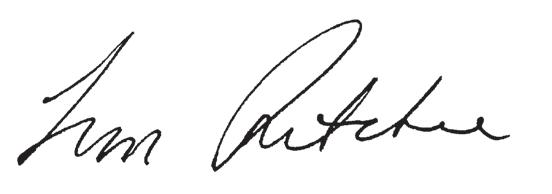
Hon. David D Cortese
Santa Clara County Board of Supervisors
James C. Deichen
Suntrust Robinson Humphrey
Christopher S. DiGiorgio Board Chair Accenture (ret.)
Mohana Dissanayake Deloitte
Carl Eschenbach Sequoia Group
Aymeric Gisselbrecht Renesas Electronics
John Giubileo Accenture
Raquel Gonzalez Bank of America
William W. Heil Board Secretary
John Heinlein, Ph.D. Arm
This spring, we raised our glasses for a champagne toast more than 20 years in the making. We honored our founders and the more than 10 million visitors who have helped make The Tech a well known home for innovation and hands-on learning.
We also opened a new chapter in our history, renaming our institution to reflect more of the wonder and inspiration found within our walls. The Tech Interactive is now looking forward to taking its proven methods of developing problem solvers from San Jose to the rest of the world.
As you read over some of the many ways we aim to accomplish this, I hope you will take a moment to celebrate not just how far we’ve come, but the bright, bold future ahead.
Cheers!
Gerald D. Held, Ph.D. The Held Group
Dave House
Shannon Hunt-Scott The Scott Foundation
Joe Kava Google
Randy Krenzin Wells Fargo Advisors
Jami Dover Nachtsheim Intel (ret.)
Omkaram (Om) Nalamasu, Ph.D. Applied Materials
Daniel Perez Oncore Manufacturing Services (ret.)
Frank P. Quattrone
Past Board Chair Qatalyst Group
Roger J. Quinlan Coherent, Inc.
Tim Ritchie, President and CEO The Tech


Matthew Sapp Board Treasurer EY
Chad Seiler KPMG
Judy C. Swanson The Swanson Foundation
Daniel J. Warmenhoven Board Vice Chair Warmenhoven Holdings, LLC Netapp (ret.)
Steve Young HGGC
2 | MADE AT THE TECH
Tim
Chris DiGiorgio Chair, Board of Directors
from Leadership
Letters











16 Highway to the ChromoZONE 5 Global Humanitarian MADE at The Tech
Editor-in-Chief Jeff Gire
Creative Director
Designers
Aquarium
Team
and CEO
Chief Financial and Operations Officer
Development
Vice
Learning
Marketing and Business Development Made at The Tech is a magazine for members, supporters and friends of The Tech Interactive. For questions
publication,
MEDIUS PANTONE 165 CVC Black Te t: Century Gothic Color Information 20 1 S. M arket St ., San J os e, CA 95 113 1- 40 8- 29 4- 83 24 | thet ech. or g | 24 7 ON THE COVER 28 30 18 32 26 34 8 10 14 6 4 From Silicon Valley to Silicon Prairie Volunteers, Assemble! “Eureka!” was created by Maria Robles-Gonzalez, gallery exhibit lead. The chalk art installation was made for The Tech’s annual Community Day on June 30, 2019. Words from the Wise Scene at The Tech Interactive Check out what’s been going on at The Tech! Made for You What it takes to develop experiences for all of our visitors Do Try This at Home: Making with Microbes Opening Eyes with Science Labs Tech, Yeah! Activities, social media highlights and more! Join the Arty Building Something Special The Kind of Thing That Grows on You Now Playing in IMAX Better World on the Way Meet the 2019 Tech for Global Good Laureates
Senior Editor Marika Krause Senior
Krista Thomas Graphic
Gloria Koh Eloisa Tan Contributors Lauren Cage Chris DiGiorgio Michelle Duncan Mark Emmons Tara Komar Sierra LaDuke Grace Talice Lee Caitlin Nealon Katie Ozawa Tim Ritchie Anja Scholze Corinne Okada Takara James Wong Photographers Don Feria Sierra LaDuke Monterey Bay
Valery Rizzo Karen Santos Eloisa Tan Leadership
Tim Ritchie President
Harvard Sung
Maria Pappas Vice President,
Gretchen Walker
President,
Rachel Wilner Vice President,
about this
contact Jeff Gire, Director of Media and Community, at jgire@thetech.org. Printer San Jose, CA www.mediuscorp.com
BETTER WORLD ON THE WAY
This year’s Tech for Global Good laureates are paving the way for a future that advances women through technology
Every year, The Tech for Global Good program celebrates innovators who are using technology to tackle big problems. The stories of these laureates are the bedrock of the program and are featured in a prominent exhibit on the Upper Level of The Tech Interactive, as well as in educational materials and workshops available on site and used by teachers in their own classrooms.
In 2019-20, The Tech for Global Good will honor four laureates who, through the use of technology, enable women and others often excluded from full participation in the world around them to fully engage in work and civic life.
AI4ALL
Founded in 2017
Mission: Diversify the field of artificial intelligence
What they do: AI4ALL is dedicated to increasing diversity and inclusion in artificial intelligence education, research, development and policy. AI4All is working to ensure that AI benefits humanity by including girls, women and people of color and underrepresented communities.

AMANDLA.MOBI
Founded in 2014
Mission: Improve the lives of marginalized populations in South Africa
What they do: Amandla.mobi uses social media platforms to engage and mobilize citizens to make a difference in the civic life of communities in South Africa. The Amandla.mobi platform has 200,000 members and has influenced legislation enabling community access to digital technology and improving the overall safety of women and girls.
SOLVATTEN
Founded in 2006
Mission: Increase access to safe water in 20 developing nations
What they do: Solvatten built a portable device that uses solar energy to purify water, making it easier for women and underserved populations to access safe drinking supplies.

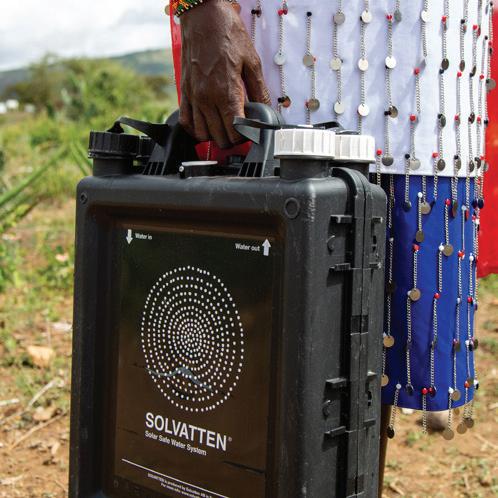
ZIPLINE
Founded in 2011
Mission: Deliver life-saving medicine to women giving birth in Rwanda and Ghana What they do: Zipline built a drone delivery system to reach communities without infrastructure with populations with medical supplies, providing 11 million people quick access to critical medicines.

4 | MADE AT THE TECH
GLOBAL HUMANITARIAN: JULIE PACKARD
On Nov. 2, 2019, The Tech for Global Good will honor Julie Packard with the James C. Morgan Global Humanitarian Award, presented by Applied Materials, Inc., at the third annual Tech for Global Good celebration
Packard is an international leader in ocean conservation and executive director of Monterey Bay Aquarium. We recently caught up with her to ask about science education and equity.

Made at The Tech: What inspired you to become a scientist?
Julie Packard: My father was an engineer, and for him and in our family, it was all about science. He also loved the outdoors, so we spent a lot of time in the outdoors, and he was just an incredibly curious person. My mother just loved the aesthetics. She was a city girl by upbringing, but she had a huge appreciation for nature, and I think my biggest influence truly was just spending hours and hours exploring the outdoors.
What have you found to be the most effective way to inspire young people to value science? We found here at the aquarium that using the ocean as a theme for science education is really a winner. And, of course, the best way to teach science is getting kids to ask their own questions. So really the aquarium and the ocean animals provide just an incredible backdrop and an incredible resource for young people to become excited about science. Watching animal behavior, creating their own hypotheses about what animals are up to, why they do what they’re doing, and then observing them makes for a lot of great programs.
In what ways does the aquarium reach communities that have been traditionally underrepresented in scientific fields?
It’s absolutely been one of our goals since we opened to reach a diversity of kids. ... So many of these kids are English-language learners. Science education doesn’t
get nearly the attention it used to back in the ‘50s when I went to public school in California. And so, we’re working really hard to meet that need by providing free admission for the kids to all of our programs.
The life sciences have traditionally been an area of STEM that sees the most gender equity. How can the rest of STEM catch up?
The allure of animals, no matter what gender you are — animals are just so intriguing and so alluring. So, that leads (people) into the biological sciences. Of course, even studying biology is becoming a more and more highly technical field as we discover more and more in the molecular level.
At the same time, engineering and many of the other sciences have not seen the gender balance that we’d like to see. And I just think it’s a matter of how we’re teaching these fields, because studying biology or asking biological questions or ecological questions spans all of the sciences.
So ocean science provides an incredible opportunity to achieve more gender equity across the scientific disciplines. At the Monterey Bay Aquarium Research Institute, for example, we have scientists working across disciplines and over time. Over the 25-plus years since the institute began, we’ve just seen a growing number of awesome women scientists come into the field. I’d like to see it go a lot faster.
FALL 2019 | 5
NOW PLAYING IN IMAX
Our slate of educational films has never looked better in the IMAX Dome Theater. With incredible sound and an unbeatable picture, you will be transported, informed and inspired — all in under an hour!
“Volcanoes: The Fires of Creation”
Experience these fiery creations in a way only IMAX can deliver! With more than 500 active volcanoes, the Earth is bursting at the seams with these forces of mass construction. The story of volcanoes is the story of the planet’s creation — and the story of us.
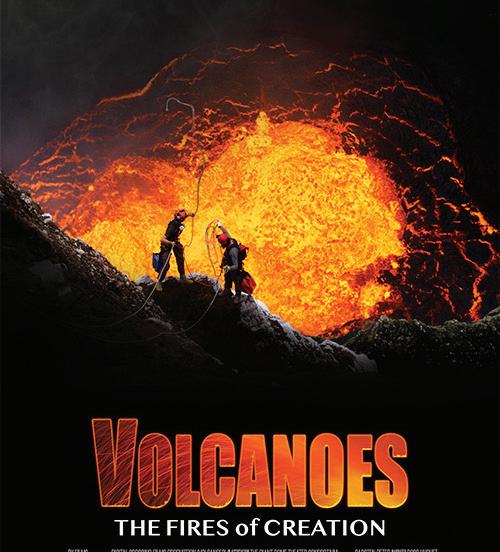
“Superpower Dogs”

Learn about the life-saving superpowers of the world’s most extraordinary (and adorable) working dogs! As we discover the unique abilities of dogs and the remarkable science behind their superpowers, we’ll never look at our best friends the same way again!
“Apollo 11: First Steps Edition”

With a newly discovered trove of never-before-seen 70mm footage and audio recordings, join Neil Armstrong, Buzz Aldrin, Michael Collins, the Mission Control team, and millions of spectators around the world, during those momentous days and hours in 1969 when humankind took a giant leap into the future.
Opening Friday, Oct. 25, 2019
“Back from the Brink”
Experience on the giant screen the remarkable true story of three animal species rescued from the brink of extinction. Join this amazing adventure to save California’s enchanting Channel Island Fox, China’s fabled Golden Monkey and the wondrous migrating crabs of Christmas Island. Discover the heartfelt and ingenious human efforts to rescue endangered species around the world.
Showtimes and tickets: thetech.org/imax

VOLUNTEERS, ASSEMBLE!
Meet one of the superheroes who power our hands-on learning experiences
For the past seven years, Sharon Teeter has been known around The Tech Interactive as a super volunteer. Her origin story begins 28 years ago, when her son, then in fourth grade, participated in The Tech Challenge. She loved the program’s focus on teamwork.
Jump to 2012; Sharon has just retired. Following a career in urban sociology, she searched for a volunteer experience that kept her close to people. The Interactive was a perfect fit.
We sat down with Sharon to understand why she spends her time with us week after week.

We’re so appreciative of Sharon and all of our volunteers. Interested in joining our team of superheroes? Visit thetech.org/volunteer.
What do you enjoy about volunteering at The Interactive?
I really like the mission. I like how The Interactive treats people. I like the school groups who come in, and the energy of the kids. I’m here for the kids and the families. I love the questions they ask when they get really engaged.
What’s your favorite experience at The Interactive? Living Colors Lab. Kids LOVE being biologists for 15 minutes. They really get into it. It’s very exciting.
Were you interested in science before volunteering with us?
No. I was not. I came from a field that had nothing to do with science. I’ve had to learn a lot and I’ve appreciated having this opportunity to learn here at The Tech Interactive.
FALL 2019 | 7
“I’ve had to learn a lot and I’ve appreciated having this opportunity to learn here at The Tech Interactive.”
JOIN THE ARTY
Two of the newest experiences at The Tech Interactive, Wave Atlas and Resonance, encourage visitors to get hands-on with art

Wave Atlas is a digital terrarium with three windows that peer into the same colorful universe. A simple hand motion spawns creatures that begin evolving. The experience features artificial intelligence, virtual reality and motion sensor technology.
“My son thinks he’s creating viruses. This is very interesting and entertaining. We both like it a lot.”
— Nelson, an adult visitor
“The noises sound like ... DINOSAURS!”
— Mathias, 5-year-old visitor
“You have some people up in front and some people in the back. It’s a whole spectacle that people can create for themselves.”
— Marpi, creator of Wave Atlas
8 | MADE AT THE TECH
Resonance is a multi-sensory experience that encourages participants to explore the movement and sounds of water.

This project was created by Munich-based visual artists Yves Peitzner and Jelena Gregov and sound artist Felipe Sanchez from Kling Klang Klong. It demonstrates the pureness of water and how our actions can impact the environment.
— Nicky, 11-year-old visitor
“I love the sound of water. This exhibit imitates it well. It’s really peaceful.”
— Megan, an adult visitor
Visit Reboot Reality on the Upper Level of The Interactive to see and interact with these experiences, which were made possible with a grant from Knight Foundation.
FALL 2019 | 9
“It’s addicting … and satisfying.”
BUILDING SOMETHING SPECIAL
Ida Jew Academy is boosting confidence and capability in students by embracing The Tech Challenge and Design Challenge Learning

The 200 middle schoolers at Ida Jew Academy are gathered in the cafeteria, looking on breathlessly as a team of student engineers carefully place a structure on the table at the front of the room. Built entirely of toothpicks and marshmallows, their four-story building looks, oddly, both precarious and solid, featuring a wide, stable base but also a decided tendency to lean to the left.
The team of four girls slowly back away, willing it not to fall. It stands tall, but the real test is yet to come — the building needs to withstand the dreaded shake table, which will jolt and vibrate the Marshmallow Manor for 30 long seconds, exposing any structural weaknesses.
Elisha Burns, Ida Jew’s STEM Teacher on Special Assignment (TOSA), is the judge for today’s Great Shakeout competition, so she steps forward to flip the switch on the shake table. It instantly comes to life, making the tower of toothpicks shake and shimmy. The building continues to jitter as the audience’s cheers grow louder until, finally, Burns turns the table off and the engineers high-five each other.
Their building has survived.
Really, though, that shouldn’t be a surprise. Ida Jew students have a lot of experience building and engineering, because many of them participate year after year in The Tech Challenge, the signature program of The Tech that invites teams of young people to use the engineering design process to solve a real-world problem.
Over the years, Ida Jew teams have won awards ranging from Best Costume to Best Overall, and their Tech Challenge coordinator, Brenda Serrano-Perez, says Ida Jew makes it a point to recognize these victories. The school’s makerspace and cafeteria feature a wall of banners that Serrano-Perez calls the Hall of Fame.
“Just like you have banners of sports in the gym, we have these banners because this is just as important a pursuit as sports,” she says. “It’s about mindset. We also do a big awards banquet at the end of the school year where we all come together as a community to recognize their achievements. It matters.”
10 | MADE AT THE TECH
The impact on students
In addition to teaching kids how to build and measure, The Tech Challenge fosters crucial 21st century skills like collaboration, communication and creativity, something former Ida Jew student Marano Ortega can attest to. For the 2015 Challenge on seismic engineering, his team was inspired by pizza.
“We were eating pizza and trying to brainstorm and one of my teammates suddenly grabbed two styrofoam plates, got a marker and just shoved it into the plates, and that’s where we got our first idea,” he says. “It was kind of like that for the whole thing. We always got our inspiration from stuff we used every day.”
For fellow Ida Jew alum Sydney Esquivel, it’s the collaboration aspect of The Tech Challenge that she’s improved on the most. “Some people are more outgoing, so they share their ideas more and other people like me are more quiet, but that doesn’t mean they don’t have good ideas,” she says.
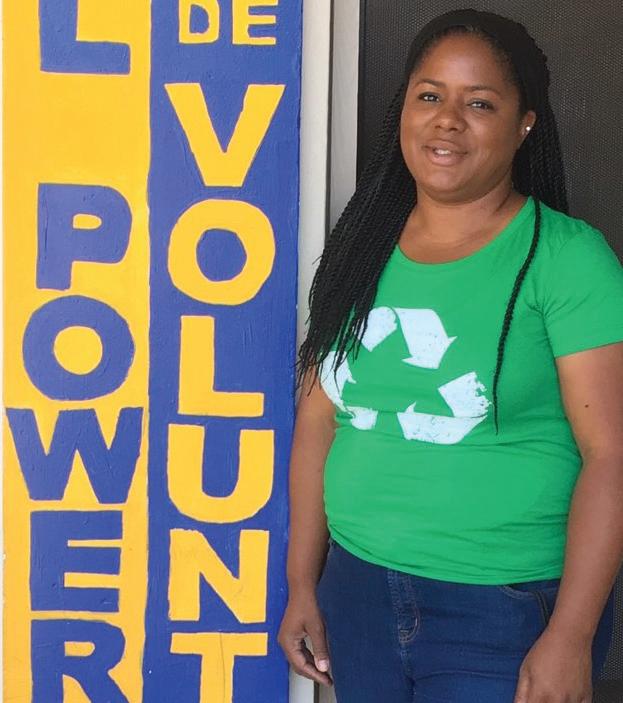
These “soft skills” matter a lot. A 2019 study from LinkedIn found that the top five skills most sought by employers are creativity, persuasion, collaboration, adaptability and time management — all key aspects of The Tech Challenge. Keep reading on next page.
Tech Challenge Wisdom
Some tips from Tech Challenge alums Marano Ortega, Sydney Esquivel and Maxwell Esquivel for creating a winning team.
Team size
Marano (Grade 9): Three is the best number. Two means you come up with the same ideas and you have no variety. Four means you have too many ideas.
Maxwell (Grade 8): Five, that way you get more people to help and it makes things go faster. You can multitask!
Sydney (Grade 9): Between four and five. You get a variety of ideas and time goes faster.
Dealing with arguments
Sydney: It’s debating, not arguing. Arguing is just stating your idea but not giving evidence, but debating means you can support your idea.
Maxwell: If you have an idea and someone else disagrees, you split up and test it to see which one works.
Marano: Democracy. Majority rules.
Convincing your friends to try The Tech Challenge
Maxwell: It doesn’t hurt you! There’s only good that comes from it. You learn things you didn’t know before.
Sydney: It will help you in life. If you want to build something, you’ll learn from The Tech Challenge.
Marano: Think about the reasons you should do it instead of not doing it.
FALL 2019 | 11
Elisha Burns, Ida Jew’s STEM Teacher on Special Assignment
Seeing the positive changes in students like Marano and Sydney makes Serrano-Perez more determined than ever to convince other schools to participate in The Tech Challenge. As a newly elected member of Mt. Pleasant Elementary School District’s Board, she hopes to expand The Tech Challenge to all of the district’s schools.
“Design challenges are just not something you normally see at a public school. Since we began doing Tech Challenge, we’ve evened the playing field,” she explains. “There are now just as many public schools winning awards as private. To me, public school is worthy, it’s viable, and we just have to provide what the students need.”

Helping her with that goal is Burns, the Ida Jew TOSA who believes just as strongly as Serrano-Perez that Design Challenge Learning is crucial for students to succeed in the future. While Serrano-Perez is looking to spread the program outward, Burns has been instrumental in integrating it into Ida Jew’s curriculum.
That means bringing Tech Challenge-inspired events like the Great Shakeout to every single class, all the way down to the kinders. But it hasn’t been easy. Staff turnover and setting aside class time for design challenge activities are two of the most common obstacles.

Still, Burns remains committed to Design Challenge Learning, having seen the changes in her own son, who also attends Ida Jew: “He has that growth mindset, that yes mindset. He’s always saying ‘I’m an engineer,’ so he gets it,” she says.
“This is where education is moving. It’s so important to careers that don’t even exist yet. This is the future.” ■

12 | MADE AT THE TECH
“This is where education is moving. It’s so important to careers that don’t even exist yet. This is the future.”
Marano Ortega, far right, with his team, Fly to the Future. The team won Best Costume for Grades 7-8.
One of the many hovercraft prototypes that Ida Jew teams iterated before the big day.
Team Fly to the Future gets ready to launch!


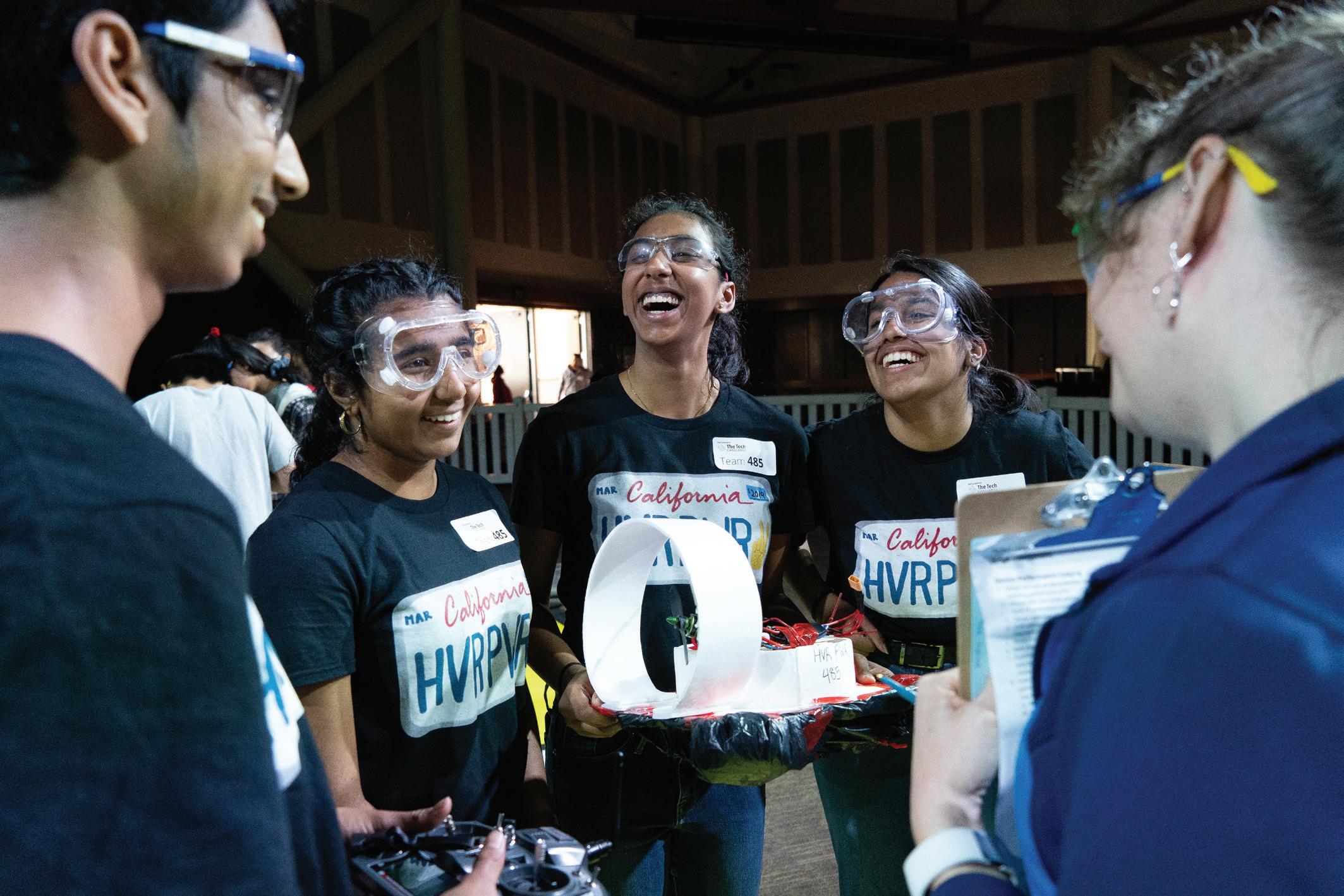

FALL 2019 | 13 Your team is going to explore a distant planet! The mission: Launch, land and expand equipment for scientific research and life support. The challenge: Design, document and build a solution. Who: Students in Grades 4-12 What: A team engineering design challenge in which participants build a device and document their process Why: To develop creative solutions to a real-world problem Showcase Saturday, April 25 Grades 4-5 • Grade 6 Sunday, April 26 Grades 9-12 • Grades 7-8 TheTechChallenge TheTechChallenge TheTechInteractive TheTechInteract Registration Opens in October thetech.org/techchallenge Contact us 1-408-795-6210 challenge@thetech.org thetech.org/techchallenge Follow us on social! #TheTechChallenge
THE KIND OF THING THAT GROWS ON YOU
The BioTinkering Lab was a source of inspiration and mentorship for the teenage winners of the international Biodesign Challenge
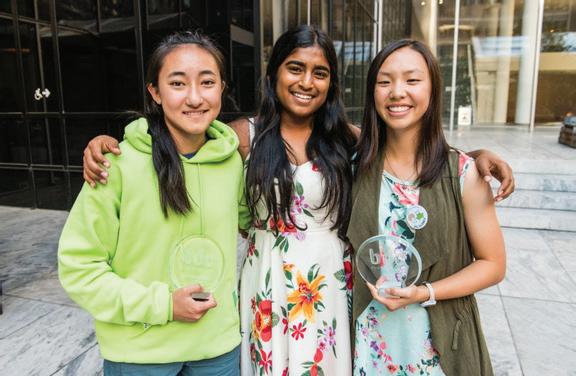
A trio of Bay Area teen girls from a garage makerspace stood on the stage at MoMA in New York City. They were among 37 international teams from universities and high schools from nine countries participating in the Biodesign Challenge Summit — a competition that bridges art, design and biotech to create a generation of professionals to lead the emerging field of biodesign.
They had shared a vision for a future of toys that wouldn’t rely on single-use plastics. Rather, what if the packaging, and even the toys themselves, were completely organic and biodegradable? They were set to receive two awards, Outstanding Field Research
and Runner Up to the Overall Prize for their biomaterial toy kit.
They call themselves the GIY Bio Buddies — GIY being “Grow It Yourself.” They were among participants presenting their biotechnology ideas for solutions to pressing global issues through the integration of biotechnology with art and design. In their presentation, in between sharing LEGO® blocks skinned with bacterial cellulose, petri dish kaleidoscopes and fungus toy creature planters, the GIY Bio Buddies acknowledged the mentorship by The Tech Interactive’s BioTinkering Lab, a place that helped launch their successful journey from the Bay Area to New York.
14 | MADE AT THE TECH
Often the first steps are the hardest. How do you begin to imagine answers to big questions around global sustainability issues? With no prior knowledge of biodesign, the team consisting of Anne Hu (sophomore at Fremont High School), Trisha Sathish (freshman at Monta Vista High School) and Emily Takara (freshman at Pinewood High School) began their eight-month project with a visit to the BioTinkering Lab last fall.
The BioTinkering Lab is an experimental space on The Interactive’s Upper Level that explores the intersection of biology, design and technology. Since opening in March 2016, a series of approachable experiments has empowered visitors to use biology as a creative, problem-solving medium.
Biotechnology has become a powerful tool for innovation, but public knowledge and access to these advances is still limited. The BioTinkering Lab bridges this gap. It is a first-of-its-kind workshop space that designs, develops and runs novel bio-making experiences for everyone — including teams of young people with their eyes on
an international competition. So far, the lab has created three unique semi-permanent programs. The current program is Making with Microbes, where visitors collaborate with living microorganisms by mixing different teas and sugars to grow a bespoke biomaterial of their own design. They then use biomaterial grown by a previous visitor to create something to take home.
The biodesign challenge team received a behind-the-scenes peek at the Making with Microbes activity being developed by staff members Anja Scholze, Caitlin Nealon and James Wong. It was during this meeting that they were first introduced to best practices for growing bacteria cellulose. This technique would inform how they would create their sustainable toy kit for the competition.
The design philosophy at work in the BioTinkering Lab also gave fuel to the team of teens. The lab doesn’t just expose people to cutting-edge biotechnology, it empowers them with creative control and agency.
Seeing the BioTinkering Lab’s playful approach and confident acceptance of bio culture failures framed the
Define This!
Learn the lingo for the growing maker movement in biology.
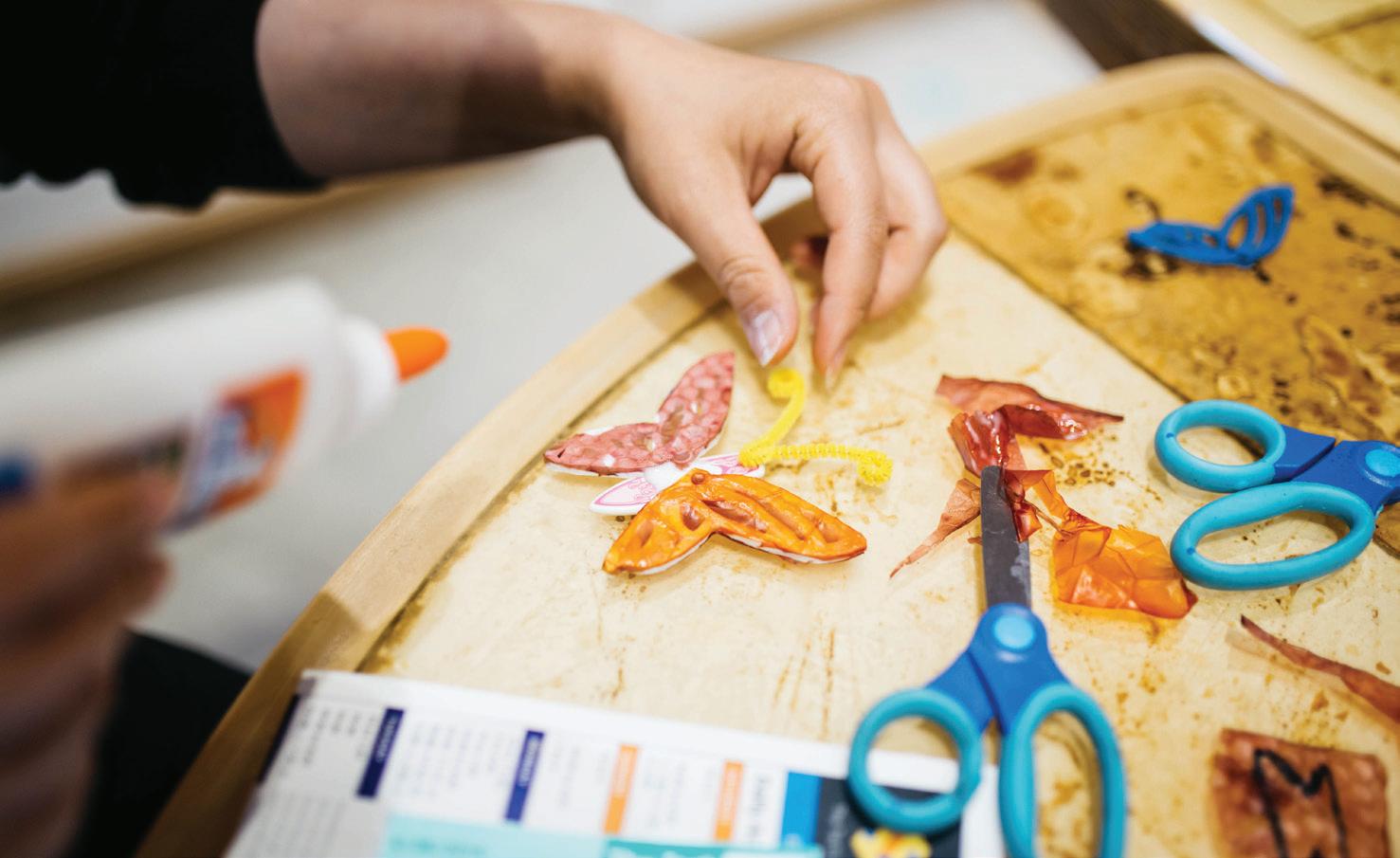
Biofabrication
Using living systems as manufacturing platforms to grow useful materials and products. This can turn tiny molecules into factories, like growing spider silk in engineered bacteria or manufacturing fragrance molecules in yeast.
Biodesign
Incorporating life into design. This can be integrating living components and materials into non-living systems as well as repurposing or optimizing existing biology for a desired function. For example, making concrete using bacteria or engineering plants to be drought tolerant.
Biotinkering
Exploring and playing with biology outside of traditional laboratory settings to make, create, design and discover. Just one example — growing kombucha leather or mycelium planters at home. This is a term that was coined by The Tech Interactive!
FALL 2019 | 15
team’s project. Inspired by what they saw, they set out with an emphasis on play, open-ended exploration and an incorporation of failure. In fact, the final toy kit the team created and presented includes a paper coffin.
iterate their designs and share back the data they collected in their final summit presentation. The team’s instructor, Corinne Takara of Okada Design and the Nest Garage Makerspace, said that the feedback from The Tech Interactive workshop and the support from the BioTinkering Lab showcased an inspiring model for a science center and community collaboration and mentorship.
“There is an opportunity for museums and science centers to offer workshop space and workshop debriefs to teens developing educational science activities,” said Takara. “In this case, taking a leap of faith in mentoring led to a small group of high school students standing on a stage to a standing ovation by the biodesign community at MoMA.”
In April 2019, Anne, Trisha and Emily conducted their three kombucha leather-craft activities — a petri dish kaleidoscope, paper dolls and LEGO® wings — in the BioTinkering Lab. Their three-hour drop-in workshop engaged more than 90 visitors, whom they also surveyed. This experience, along with three other community engagement events, enabled them to

As one of the GIY Biobuddies put it, “Before this journey we considered ourselves artists and makers, but now we consider ourselves bioexplorers and educators, too.” ■
For more information about this project and a trio of incredibly innovative teens, check out giybiobuddies.weebly.com
16 | MADE AT THE TECH
“Before this journey we considered ourselves artists and makers, but now we consider ourselves bioexplorers and educators, too.”
HIGHWAY TO THE CHROMOZONE
A longtime partnership with Stanford demystifies DNA
Every morning from October to August, The Tech Interactive’s BioTinkering Lab becomes the ChromoZONE, where it’s all genetics, all the time. You’ll find school groups and families at tables with a graduate student from Stanford University’s Department of Genetics making a necklace with their own DNA, playing forensic detective to solve a crime, or matching certain traits to long-gone ancestors to piece together how they lived.
For visitors, the experience isn’t just about being exposed to science or learning the meaning behind intimidating acronyms like CRISPR. It’s also a chance for a fun and informal meeting with budding scientists. Young people get to see and interact with someone they may identify with, and in doing so begin to see more options for their future.
“One of our goals is to show young people that anyone can be a scientist, or use science in their lives,” says Dr. Abbey Thompson, Director of Outreach Activities at the Department of Genetics and leader of the partnership. “Our hope is that everyone leaves our activities thinking this is something they could do in the future.”
On the university’s side, the program’s long waitlist shows how popular it is with Stanford graduate students and post-docs, who look forward to the opportunity to share their passion. Having an actual

scientist facilitate the activity at The Interactive also helps the experiences appeal to any age. When a family is making DNA necklaces, the kids are excited to leave with a souvenir, but mom or dad may have a question about DNA testing.
Public education is an important aspect of the partnership. This drives the Understanding Genetics website (genetics.thetech.org), one of the Internet’s most high-traffic stops for genetics information. The Ask-a-Geneticist feature is especially popular, and Stanford students have answered questions about everything from blood types to incestuous plotlines on “Game of Thrones.”
Not only does this platform help inform the public, but for the students who research and answer questions, the site is a crash course in communication skills that will be valuable throughout their career.
“Stanford at The Tech has been this great way to not only create a more informed public but also create scientists who are better informers,” says Thompson.
If you’d like to participate in a ChromoZONE activity, drop by the BioTinkering Lab in The Interactive’s Upper Level weekdays from 10:30 a.m. to 12:30 p.m. The genetics activities will return to The Interactive in late October. Check Today at The Tech Interactive when you arrive.
FALL 2019 | 17
MADE FOR YOU


(AND YOU AND YOU AND YOU)









What it takes to develop experiences for every one of the 500,000 annual visitors to The Tech Interactive











 by Grace Talice Lee
by Grace Talice Lee
18 | MADE AT THE TECH
At The Tech Interactive, science and engineering aren’t just for everyone — they’re for anyone. It’s an idea that the developers of The Interactive’s experiences take to heart when creating something new. The process can take years — but the results mean exhibits, programs and challenges designed for all abilities, ages and interests.




















FALL 2019 | 19
Exhibits
How we design one-of-a-kind learning experiences made
from scratch
The upcoming Solve for Earth exhibition is slated to open in fall 2020, and its journey of testing and prototyping is about to pay off for visitors to The Interactive. One part of Solve for Earth is called Pick + Chews, where guests navigate a digital version of a Chipotle-style eatery and assemble a wrap or bowl by clicking through virtual meats, vegetables and toppings — at the end, the computer assesses the environmental impact of the meal, with an opportunity to remake the platter with less water or land consumption.
An early iteration of this activity invited guests to imagine whatever meal they wanted, perhaps inspired by a dinner they hoped to eat later. But prototyping soon revealed that many younger guests would dream up fantasy meals of spaghetti, popcorn and ice cream. While these ideas were inspired, the results held little relevance to everyday eating habits. So the developers streamlined the food selection to a burrito-restaurant format that many families frequently encounter. Suddenly a closer connection to real life emerged — which attracted more people, more deeply.
Yet another iteration conceived of Pick + Chews as an immersive lunch line simulation, with a plastic prop for each ingredient, a list of nutritional information on the side and a staff member delivering a verdict on the eco-friendliness of the final meal. But the developers discovered that the physical act of taking or removing a toy chicken leg from an actual plate evoked too many
A Place for Everyone
sensitive memories for some guests — especially with a list of calories and saturated fats displayed right next to it, and an adult standing at the end of the line to assess the meal. The intended takeaway of this display got lost in emotional baggage, dietary complications and the pressure of winning a staff member’s approval.
So the designers moved the simulation into an alldigital experience. Guests now assemble their wrap or bowl by clicking on a screen, rather than collecting tangible objects. Nutritional facts were eliminated. And the impartial computer, instead of a total stranger, instantly delivers its evaluations without judgment. With these upgrades, the accidental triggers were rooted out from the project. Guests were better able to focus and learn about the main point: increasing sustainability through food.
Curator and Exhibit Developer Michelle Maranowski summed up the designers’ mindset when she said, “We do a lot of deliberate thinking. We carefully consider our audience and how to share content with our visitors, so we can have these important conversations with our community.”
Pick + Chews illustrates the multi-year journey of surveying, prototyping and gathering public feedback everywhere from a main gallery to an offsite workshop, a member event to a farmer’s market stand. The trial runs are even operated with two designers each — one to interact with a tester, and the other to monitor that interaction for nonverbal cues. All to ask as many kinds of people as possible, “Does this concept interest you, and how much?” — with the goal of producing a show that gets practically everyone to answer, “Yes, I’m interested, and very much so.”
The Tech Interactive is proud to join the Museums for All program. This means any member of our community can pay a price that meets their needs. It’s our way to make sure nobody feels left out from the educational experiences we provide. With lots of different people visiting us, we like to think we offer something for everyone.
Couple on a date
Think you have chemistry? Prove it! Head to our Living Colors Lab, throw on some gloves and get your science on making bacteria glow in new and exciting colors.
Keep your cool and kick back for an IMAX movie. There’s no better excuse to cuddle up than watching the cute (and brave!) pups in “Superpower Dogs.”
The most underrated selfie spot in San Jose? Head to the balcony outside Body Worlds Decoded and you’ll be overlooking Plaza de Cesar Chavez.
20 | MADE AT THE TECH
Science Labs
How we craft deep dives into STEM for all types of learners
Of course it’s not just the exhibits that include everybody, but also the guided activities — especially the Learning Department’s 90-minute Science Labs for school field trips, which make engineering accessible and fun.

Again, the process begins long before the kids even walk into the room. The Interactive stays up-to-date with best practices for teaching every gender, age and ability, and then designs workshops based on these advised strategies. For example, the latest studies advise teachers to create opportunities for building social connection, to give open-ended low-stakes prompts and to emphasize the lesson’s relevance to students’ personal lives.
Students always form groups and work as teams in a low-pressure environment with many possible right answers. Topics range from exploring the science behind roller coasters to designing a better storm drain to protect our water in the Bay Area. (You can read more about all of the 2019–20 Science Labs on Page 26.)
Every school visit is hosted by a workshop facilitator trained to include students of every background. For example, directions are always given in multiple ways — spoken out loud, written on posters and illustrated with drawings and photographs. Facilitators also employ conscious word choices for optimal learning and empowerment. To ease linguistic understanding,
they use cognates of Roman-based languages whenever they can — like the word “experiment,” which sounds like the Spanish “experimentar.” And to create stronger community, they refer to guests as “engineers” or “scientists” rather than “boys and girls” — not just to welcome visitors of all genders, but to help students take themselves a little more seriously as thinkers, discoverers and inventors.
These facilitation techniques may seem small, but they add up to a big difference, according to Kristen Martin Lai, Director of Facilitated Experiences: “Instructors talk about it a lot, where they saw a student struggling at first — but at the end, the kids say, ‘This was so much fun, how can I do this again? I want to do this more!’”
Finally, the content itself is adaptable. In the Physics of Roller Coasters lab, for instance, high schoolers are challenged to calculate the exact amount of energy generated by their tinker toy rides. But second- and third-graders understand the same physics concepts by dancing to embody kinetic energy and freezing on the spot to reflect the potential kind. Because whatever your age and whatever you know, there’s always something to learn — and there’s always an exciting way to do it.
Family with 10-year-old and toddler
Manage those energy levels in Body Motion. They’ll run circles around each other on a cool floor projection, strike yoga poses and maybe even get into a zen state in Heartsync.
Reboot Reality has tons of immersive visual experiences that are fun for all ages. Touchscreens and hand sensors also mean that just about any age can take the lead creating their own experience.
The building activities in The Tech Studio are designed for all ages and to encourage teamwork. Or these challenges can be taken on by a single innovator, perfect for a group that might need some makeon-my-own time.
FALL 2019 | 21
The Tech Challenge, presented by Dell Technologies
How we plan a yearlong design challenge that engages nearly every grade level
Even without field trips — without the physical science center itself — any young learner can still participate and engage with The Tech. All they have to do is sign up for the yearly Tech Challenge, where fourth- to 12th graders collaborate in solving an engineering puzzle and then present their designs at a showcase. Previous challenges invited students to transport water uphill using only wind power, build a device that moved without batteries or design a hovercraft that could float over a variety of terrains. The only sign-up requirements are a sense of curiosity and a determination to problem-solve — and at least one partner, since the point is for everyone to discover engineering together.
And “everyone” doesn’t just mean the most participants possible — but the most participants from the most demographics. Before challenges are announced, the final few ideas get focus-grouped, and more than 700 students vote for their favorites. The idea that ultimately gets picked must prove high interest across the board with different genders, ethnicities and socioeconomic statuses. If a project scores extremely well with one category but lukewarm with another, the entire thing gets scrapped.
Next, The Tech Challenge organizers ask 10 to 15 staff members to create a dozen solutions each, as a trial run of the intended prompt. This helps the team anticipate any potential questions and concerns and adjust the competition parameters for each grade-level division — for example, younger groups might get more attempts or larger landing area for their device to complete the same task. The complexities and costs of the staff members’ test devices are also closely monitored, to make sure the challenge can be solved by any skillset, on any budget.
There’s one last step before the challenge goes live. Kids are brought in for one final test run. Students from Grades 4 and 5 and high schoolers with some engineering experience test the challenge to make sure it can be understood and enriching for all skill levels and ages.
The Tech Challenge partners with schools, libraries and enrichment programs across the Bay Area to empower students to get involved. This means more than 40 free events a year, many of which are offsite in underserved communities of San Jose, Santa Clara and Morgan Hill. After the challenge launches there are info clinics about the rules and guidelines, adviser trainings for the adult mentors and team workshops that serve as a crash course in engineering to teach all the skills necessary to fulfill the prompt.
As the year progresses, students still receive more opportunities to try, learn and question. There’s the test trials in San Jose, Oakland and Monterey, where groups test their devices on the showcase rigs and seek feedback from head judges. There are online lessons,
Come to Sensory Friendly Hours!
It’s a quarterly event where we offer a more relaxed atmosphere with brighter lights and lower volumes.
For a super-sensory experience, also check out Making with Microbes. Feel different textures and note the distinct smell of material grown right in our BioTinkering Lab, then make your own mix!
Light Play, the light wall tucked between Cyber Detectives and The Tech Studio is a not just a colorful experience — it has plenty of seating to relax away from crowds.
22 | MADE AT THE TECH
Those who process the world in a unique way
delivering content in math, science, engineering and even English, in case students want to finesse their presentation skills. And there’s the constant email access to staff, who relish every query received and happily provide every answer needed.
The challenge year ends with the April Showcase, where possibility seems to crackle in the air. For example, the most recent event featured a group of young engineers with special needs — they almost never spoke or made eye contact in class. So their teacher was apprehensive about the Showcase, where they would appear on the big screen, talk into the microphone and present before the cheering audience. But when it came time, the kids didn’t just function under pressure — they excelled. They leapt up, bantered with the host and thrived beyond expectation.
“Adults get so concerned about putting kids in new situations. But it’s amazing to see kids step up to the plate when you give them the chance,” says Abby Longcor, Senior Director of The Tech Challenge. “They often show you there’s nothing to worry about.”

At The Tech Interactive, anyone can enter and everybody can find a meaningful experience with their ability to innovate. Because whether it’s the exhibits, workshops, or yearlong challenges, everything is designed for anyone. Because everyone deserves to learn, and anyone can become a scientist — whether it’s for a lifetime, a year or even just one day. ■
Grace Talice Lee is a San Jose-based writer and educator. Her current project is a book of essays on social and educational policy entitled “Every Body Every Dream.”
Artistic teen
Get inspired by real anatomy in Body Worlds Decoded, then sit down and sketch! We even have biology-inspired artwork on display, AND you can draw at our sketch table.
Paint a self-portrait with Adobe Wetbrush. The state-of-the-art technology mixes and dries digital paint just like the real thing.
Music more your thing? Compose a masterpiece in real time on Wiki Sonic — located right outside our Exploration Gallery. Just a few taps and you’re on your way, Mozart.
FALL 2019 | 23
FROM SILICON VALLEY TO SILICON PRAIRIE

On what would normally be the first day of summer vacation, 50 educators in rural Jefferson, Iowa, excitedly dash for supplies, including rubber bands, paper binders and cardboard. They’ve been challenged to build a device that harnesses the wind to deliver “cupcakes.”
In this case, the cupcakes are plastic bottle caps with glittery pipe-cleaner frosting.
“This is just so out of my normal realm,” one teacher says as her team constructs a boat from a paper-towel tube and cardboard. Though she’s pushed out of her comfort zone, she finds joy in building, testing, rebuilding and retesting the design.
“I first groaned about the cupcake delivery challenge,” said second-grade teacher Laura Smith, who used a drill
24 | MADE AT THE TECH
The Tech launches new partnership for STEM learning in rural Iowa
for the first time that morning to make a wheel. “But then I worked in a really great team, and we had great ideas. I heard so many people learn so many different things. We tried a design completely different from everyone else in the end, and it worked!”
Leaders from The Tech visited Jefferson in June to train these elementary and middle school teachers in Design Challenge Learning, The Tech’s signature blend of engineering design and project-based learning. It’s a process that encourages creativity, perseverance, teamwork and innovation. Students learn to solve problems by overcoming failure and often find there are many solutions.
“We’ve seen this method of teaching change lives,” says Erica Barrueto, senior director of The Bowers Institute at The Tech, who helped work with the teachers in Iowa. “Students go from being timid about speaking up in class to leading groups of their peers, researching on their own outside of the classroom, and believing in their ability to grow and make change.” (The Bowers Institute is the Silicon Valley headquarters of The Tech’s educator professional development programs.)

Greene County schools superintendent Tim Christensen, who attended the training himself, is asking every teacher to complete a design challenge in the classroom this school year.
“Our teachers are so dedicated to giving every student a quality education and ensuring their potential for a successful future,” Christensen said. “We are grateful for The Tech’s collaboration in bringing this innovative approach to learning. We experienced first-hand just how exciting and addicting solving problems this way can be and can’t wait to bring it to our students.”
Before the workshop was complete, teachers brainstormed design challenges they could incorporate into their lesson plans. Kindergarten educators made plans for students to design a device to help the Gingerbread Man cross a river. The fourth-grade team is planning a project connected to the novel “Hatchet.” And middle school students began the school year building their own wind-powered devices to deliver cupcakes. The Tech will continue to support these efforts throughout the year.
The workshops and support are part of a partnership The Tech was asked to join by Rep. Ro Khanna (D-Fremont).
The collaboration between industry, government and nonprofits is aimed at attracting more tech industry jobs and opportunity for area residents. Corteva Agriscience funded The Tech’s endeavor, as well as 25 scholarships for local students to study computer science at community colleges. Upon completing their studies, select graduates will participate in a four-month software development training program at a new office Accenture has just opened.
“Many people who grow up in rural America feel they must inevitably relocate to pursue their education,” said Linc Kroeger, the Accenture executive who leads the initiative in Jefferson. “We can keep talent in rural areas by helping students gain valuable technology skills, which are critical for the jobs of today and tomorrow.”
FALL 2019 | 25
■
“We are grateful for The Tech’s collaboration in bringing this innovative approach to learning. We experienced firsthand just how exciting and addicting solving problems this way can be and can’t wait to bring it to our students.”
OPENING EYES WITH SCIENCE LABS
The Science Labs program might not receive as much attention as the eye-catching exhibits (hello, Body Worlds Decoded) or films at the breathtaking IMAX Dome Theater. But eight lab classes are at the heart of The Tech Interactive’s mission of opening the eyes of young people to the wonders and possibilities of science — with a dash of introductory engineering, too.
And the best part: The emphasis is on the fun.
“We want kids to have a high-quality experience that they can’t get anywhere else,” said Kristen Martin Lai, Director of Facilitated Experiences. “Our goal is to have them walk away thinking, ‘That was really cool, and I want to keep doing this!’”
Let’s just say a lot of kids think the Sciences Labs are really cool because the program is enormously popular. In the 2018-19 academic year, about 34,000 students took part in the program. During the spring, which is the busiest time of year, The Tech runs a dozen labs every day.
The goal is to capture the imagination of young minds with real-world examples that are relatable to students from second grade through high school. This way, they aren’t “just” studying abstract concepts like science and engineering. They’re getting a hands-on understanding of how buildings withstand an earthquake, how potential and kinetic energy affect a roller coaster and how DNA is the building block of life.
“Something like building a drain to stop trash from going into the watershed is relevant to their lives,” said Claire Fowler, Labs Manager. “They come to understand that the little things they do can have this huge impact on their world.”
The magic happens in four classrooms, which are tucked away in the Lower Level of The Interactive, and two wet labs on the Upper Level. The sessions typically are 90 minutes long and are part of school field trips. They also teach collaboration skills (students work in small teams), budget management (they “buy” materials in the labs that require building things), and public speaking (they give presentations about their design and what they learned).
Martin Lai also works to make sure that the labs meet Next Generation Science Standards and Common Core State Standards. That way, they’re complementing what students are expected to be learning in the classroom. It also makes it easier for teachers to get approval from principals to visit The Interactive.
While many Bay Area schools have active science programs, others aren’t so lucky. That’s why it’s so important that roughly 50 percent of the students attending the Science Labs come from low-income schools.
“When they come here, they get to do something amazing. You can definitely see the light bulbs going off in kids’ heads,” says Fowler.
That’s why some are getting up as early at 5 a.m. in the Central Valley for the long bus ride to The Interactive.
For the chance to build a roller coaster? Yeah, it’s worth it.
26 | MADE AT THE TECH
Science Labs for 2019-20 School Year
Make it Matter: The newest lab, only 60 minutes, introduces students to simple principles of chemistry by exploring what matter is using everyday household items to perform basic experiments.
Grade 2
Physics of Roller Coasters: Understand why the thrill happens by exploring principles like friction, kinetic energy and potential energy when designing and testing roller coaster prototypes. (Sign up early! This is, by far, the most popular lab.)
Grades 2-8, adaptable for high school students
Down the Drain: Learn how to use science to protect vital environmental resources by designing and constructing storm drain grates that prevent trash from entering the Bay Area’s watershed. Grades 3-8
Simplicity of Electricity: Students explore the world of circuits, conductors and insulators as they study the properties of static and current electricity with everyday objects. Grades 4-8
Engineering for Earthquakes: Explore the science behind one of California’s greatest natural threats by constructing and testing seismically sound structures. Grades 4-8, adaptable for high school students
Chemicals of Innovation: Bring the periodic table to life by experimenting with chemical reactions and exploring real-world applications of chemistry. Grades 5-8
DNA and Genetics: Created in partnership with the Stanford Department of Genetics, students investigate the building blocks of life and discover some of their own hidden genetic traits. Grades 6-12
Chemistry of Plastination: A Body Worlds Decoded lab: Investigate and experiment with the preservation process behind The Interactive’s popular anatomy exhibit. Grades 8-12
The cost is $275 for classes up to 36 students. There is no fee for classes from Title I schools. Also, you can book our signature Innovation Labs, which are 45-minute hands-on building experiences that kids love. For more information, visit thetech.org/educators/labs.
Newest Lab for Second-Graders: Make it Matter
Once upon a time, classroom learning for second-graders involved some basic math and maybe the adventures of Dick, Jane and their dog, Spot. But so much more is expected today of youngsters academically in the 7- and 8-year-old range.
That’s why The Interactive, based on feedback from teachers, unveiled a Science Lab program for this academic year specifically designed to introduce younger kids to basic principles of chemistry. Students are exploring what exactly is “matter.” They’re studying how the universe is made up of smaller parts and how matter can change between solids, liquids and gases.
For instance, instructors use LEGO® blocks to symbolize how small particles of matter can be easily rearranged to create completely different things. They also conduct simple experiments with standard kitchen items.
“Just being able to do some small experimentation is very exciting for them,” said Kristen Martin Lai, Director of Facilitated Experiences.
“It’s a thrill just to add water to powders, so they can get to observe if it dissolves in the water or if it absorbs the water. At that age, they’re excited to do something that’s normally considered a big kid topic.”
FALL 2019 | 27
WORDS FROM THE WISE
The Tech hosts a Girls at The Tech Luncheon every spring. It’s a day when Silicon Valley executives and leaders provide mentorship to the next generation. Here’s some of our favorite advice from the day.



You do you
“Don’t take criticism from someone you wouldn’t take advice from. … Be motivated by what you can do. Skip the negativity! Let others be negative — you just go out and try!”
Carol Bartz, former CEO of Yahoo and Autodesk

Mentor sweet spot
“Even when you think you’re alone, you’re not alone. There’s always someone else you can reach out to. Find a manager that’s an advocate for you. Someone who will see more in you than you see in yourself and give you constructive criticism.”
Jessica Garrison, technical marketing engineer at Juniper Networks
Think beyond us
“What I challenge you with today, and what all of you are doing, is how do we take these ideas that have potential to be radical and revolutionary, not just for us, but for everyone on the planet. I’m excited to see how you do it.”
DJ Patil, former U.S. chief data scientist.

More diversity in tech, please
“Intelligence and hard work and talent are widely distributed, but [the tech industry] only looks like one type of person. We are literally missing out on some of the smartest people in the world solving these problems. It is our responsibility to make sure more people pursue these careers.”
Tracy Young, PlanGrid CEO and recently named one of America’s Top 50 Women in Tech by Forbes.

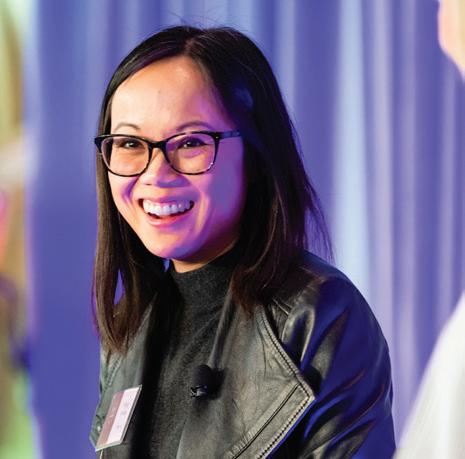
28 | MADE AT THE TECH
UPCOMING EVENTS
Thursday, Sept. 26, 2019
Geektoberfest thetech.org/geektoberfest
Saturday, Oct. 5, 2019
Girls Day thetech.org/girlsday
Wednesday, Oct. 9, 2019
The Tech Challenge registration opens thetech.org/thetechchallenge
Saturday, Oct. 19, 2019
Info clinics, team workshops and adviser trainings begin for The Tech Challenge thetech.org/thetechchallenge
Saturday, Oct. 19, and Sunday, Oct. 20, 2019
Member Mornings Weekend thetech.org/members
Saturday, Nov. 2, 2019
The Tech for Global Good Celebration thetechforglobalgood.org
Sunday, Dec. 1, 2019
Sensory Friendly Hours thetech.org/sensoryfriendly
Saturday, Dec. 14, and Sunday, Dec. 15, 2019
Member Mornings Weekend thetech.org/members
Saturday, Jan. 4, 2020
Stanford Blood Center: Give Good Blood Drive
Monday, Jan. 20, 2020
Everybody Makes Day
Saturday, Feb. 15, 2020
Girls Day thetech.org/girlsday
Sunday, Feb. 23, 2020
KDFC Kids Discovery Day
Saturday, Feb. 29, 2020
Test trials begin for The Tech Challenge thetech.org/thetechchallenge
Saturday, March 7, 2020
The Tech for Global Good Youth Climate Action Summit thetech.org/youthsummit
Sunday, March 29, 2020
Sensory Friendly Hours thetech.org/sensoryfriendly
Friday, April 17, 2020
Volunteer Appreciation Dinner thetech.org/volunteer
Saturday, April 25, and Sunday, April 26, 2020
The Tech Challenge thetech.org/thetechchallenge
Friday, May 1, 2020
Girls at The Tech Luncheon at the Santa Clara Marriott thetech.org/girlsatthetech
Sunday, May 31, 2020
Sensory Friendly Hours thetech.org/sensoryfriendly
Sunday, June 28, 2020
Community Day Free admission for all guests
For more info and a list of everything happening at The Tech, visit thetech.org/calendar.
FALL 2019 | 29




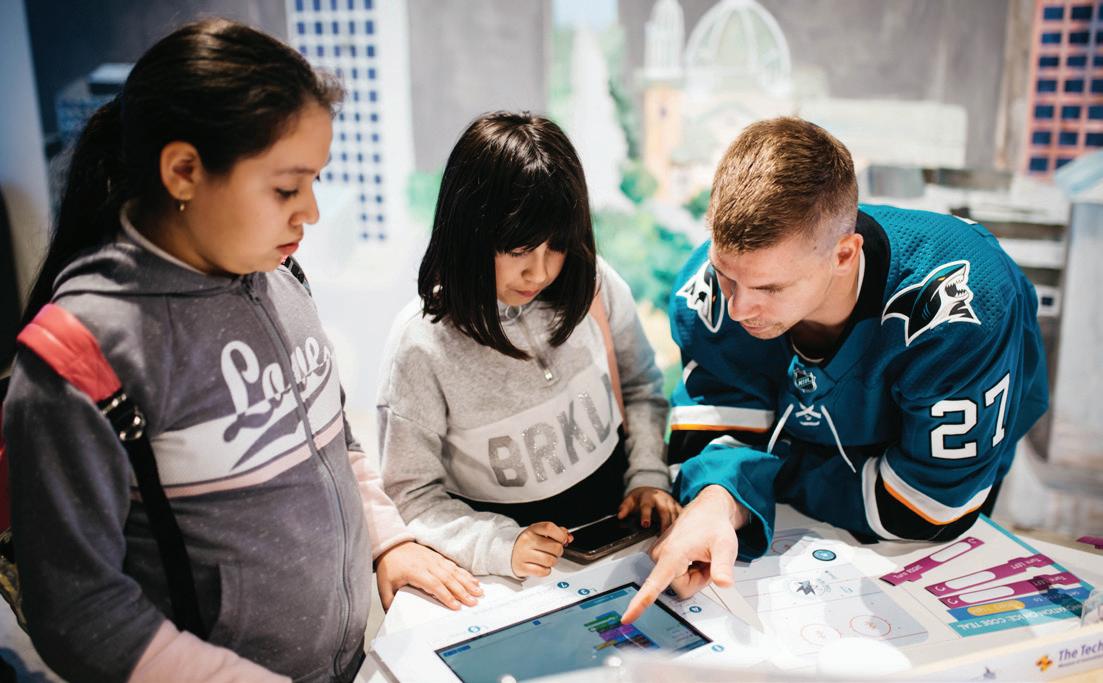

30 | MADE AT THE TECH
on Ice: Code
How to get kids to code? Just add hockey, which our partners SAP and the Sharks Foundation were happy to do. SCENE AT THE TECH
29th Annual Volunteer Recognition Dinner | April 12, 2019 Hats off to our volunteers, who shared lots of Cheshire cat grins at our colorful Alice in Wonderland party.
Innovation
Teal | Feb. 28, 2019

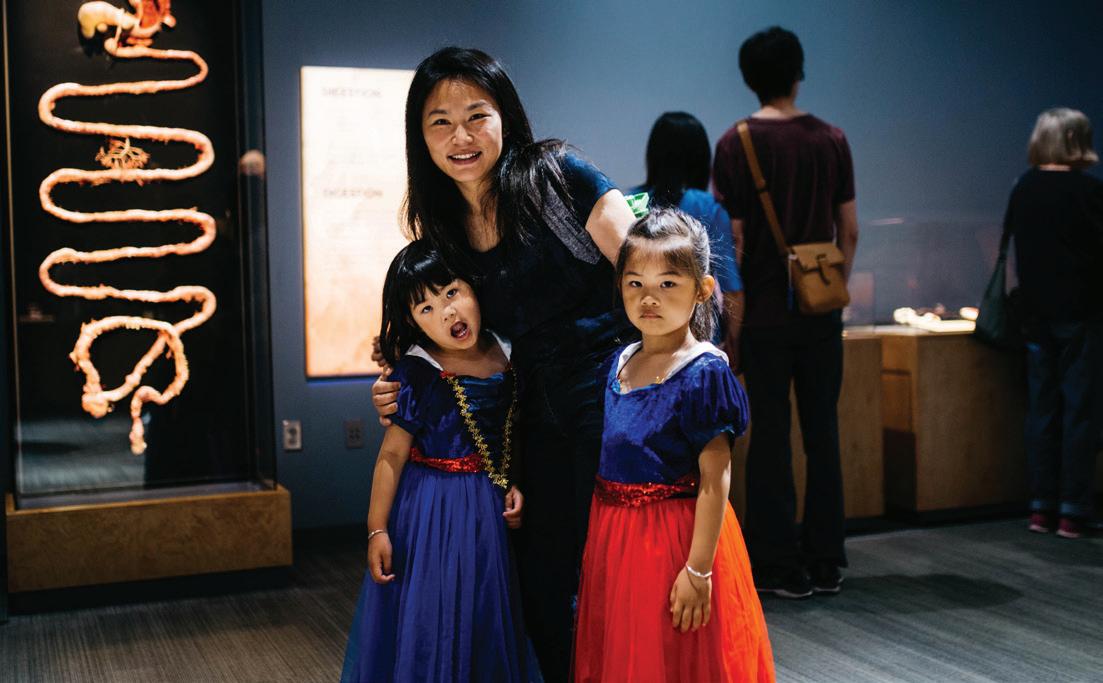






FALL 2019 | 31
We love having our Tech community come together to build, play, create and solve!
Community Day | June 30, 2019
We celebrated 20 years by unveiling a new name and renewed mission to develop problem-solvers locally, nationally and globally!
Rebrand Launch | May 23, 2019
DO TRY THIS AT HOME!
Who says all the fun has to happen at The Tech Interactive? This DIY biotinkering activity can be done with inexpensive store-bought supplies and things you find around the house!

Subject: Biodesign
Age: 8+
Key concepts: Living systems, biomaterials, microbes























Making with Microbes
Introduction
Ever wanted to grow your own paper or plastic? Or create leather that doesn’t use animals? All these can be done at home by collaborating with microbes — tiny microscopic organisms — to grow a custom biomaterial.

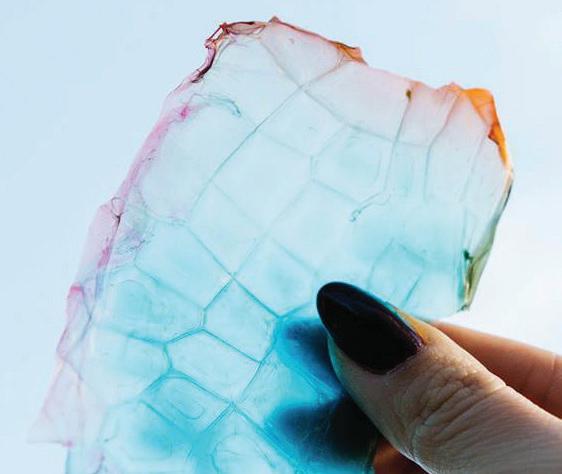
What is biomaterial?

















Our biomaterial is made by millions of harmless yeast and bacteria that live together in a liquid mixture of tea and sugar. As the microbes grow, a layer of floating cellulose forms on top. You can dry out this layer to create a sturdy and flexible biomaterial that can be used to make things. Biomaterial will grow differently depending on the container and type of microbe food used — what will you grow?
Supplies
You can grow your own biomaterial using just a store-bought bottle of kombucha and common kitchen items! Collect all of the basic supplies on this list to get started.
Heat-safe container

Sugar source (sugar syrup, agave or molasses)
Tea leaves (non-herbal) such as oolong, black or white tea
Growth container
Bottle of kombucha (unflavored)
Clean cloth (coffee filter or cheesecloth)
Rubber band


Non-metal surface





32 | MADE AT THE TECH
Instructions
1. Boil water in a heat-safe container. Ask an adult for help!












2. Add sugar and tea leaves to steep. Let the tea cool.
3. Add cooled tea into a clean growth container. Add a bottle of kombucha.
4. Cover the opening with a clean cloth and a rubber band.
5. Leave to grow for at least a week or until the amount of biomaterial you want has grown. Try not to move it!
6. Wash your hands and remove the biomaterial. Lay out on a non-metal surface until dry.
7. Peel the dry biomaterial from the surface and make some awesome things!
+ Want to make more? Repeat the steps above, but for step 3 use tea from your growth container instead of a bottle of kombucha!
Starter recipe
Container Tea Sugar Water
1 quart 1 bag (2 tsp. loose leaf) 3 tsp. 3 cups
Expert tips
Our scientists have done some testing of common ingredients. Here is what we have learned so far: How fast will biomaterial grow in different teas?
• White tea: slow
• Oolong tea: medium
• Black tea: fast
How will dried biomaterial feel if different sugars are used?
• Sugar syrup: thin and papery
• Agave: plastic-like
• Molasses: thick and leathery
Keep experimenting!
These supplies and ingredients are just a starting point, so get creative and experiment for yourself! Explore your pantry to find different types of teas, sugars, containers and drying surfaces. How do these things change your biomaterial?
How to use biomaterial



Keep in mind what you want to make with the dried biomaterial when planning how to grow it. What size or material properties might work best? For example, do you want to fold some origami or braid it into a bracelet? You could make a gift tag, sew a wallet or create stained glass art. Up to you!

Share your results!

Keep us posted about your biomaterial projects, experiments, discoveries and creations on social media with #BioTinkeringLab and #MakingWithMicrobes




Further explorations
• How large a piece can you grow? What interesting shapes?
• Can you change the color of your growing biomaterial with dyes?








• What different textures can you find or make to embed into your drying biomaterial?
• How might you integrate other materials into your growing biomaterials?


• Can you coat your biomaterial with something to make it waterproof?
BioTips
• The microbial cellulose that biomaterial is made of is similar to what helps plants stand upright!
• Your microbes cannot eat artificial sugars like Splenda.
• Do not grow biomaterial in metal containers. They will corrode.
• Avoid herbal or flavored teas.
FALL 2019 | 33
TECH, YEAH!
Help our family at The Tech Interactive navigate their way through the forgotten temple in Animaker, fly over New York City skyscrapers in Birdly and end their day inside the IMAX Dome Theater
What is it?
Details, details! Can you guess what popular exhibits or spaces are featured in these photos?



34 | MADE AT THE TECH
1. The Tech Interactive building
1 2 3
2. BioDesign Studio 3. Body Worlds Decoded
We enlisted a few furry friends to help spread the word about the “Superpower Dogs” premiere in March. These four-legged Instagram influencers are definitely worth a follow!


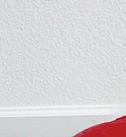






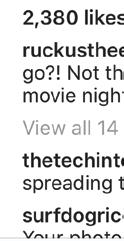













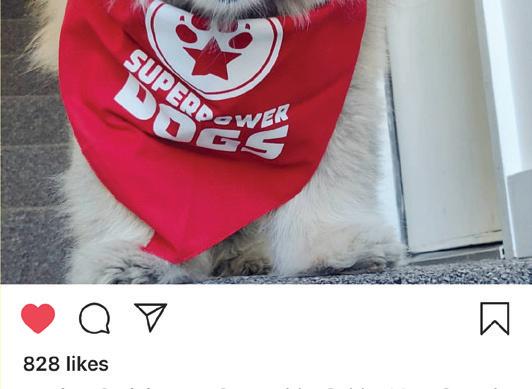
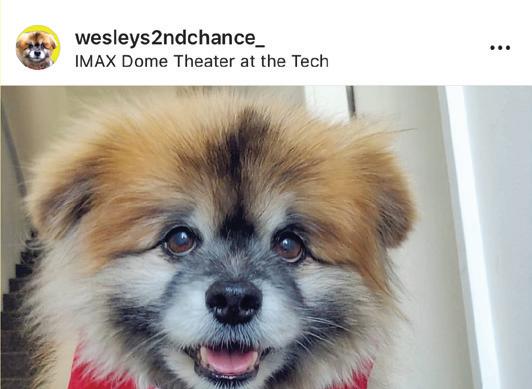












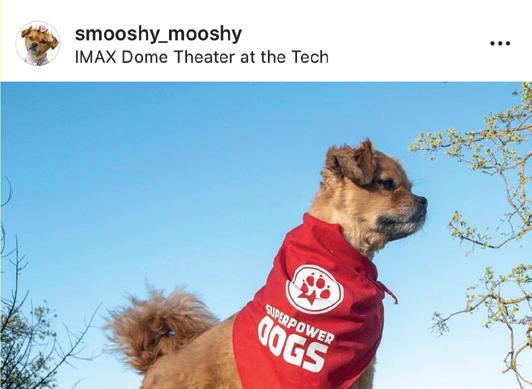















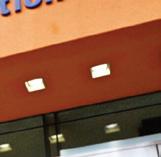


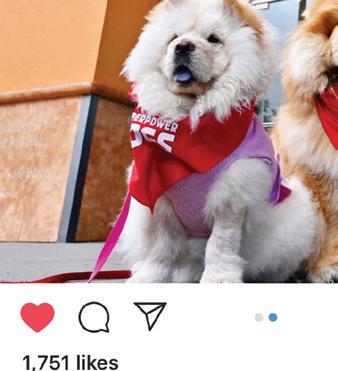
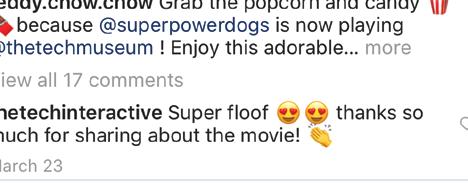



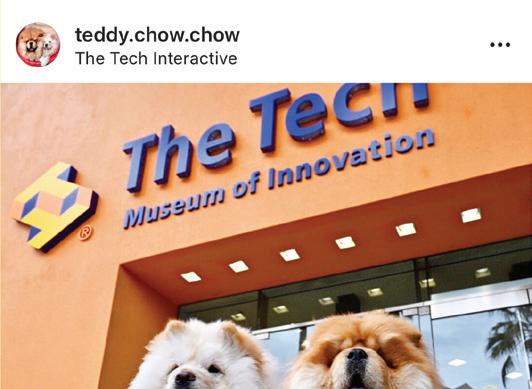



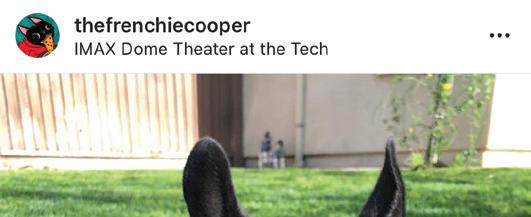





























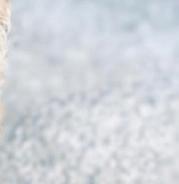
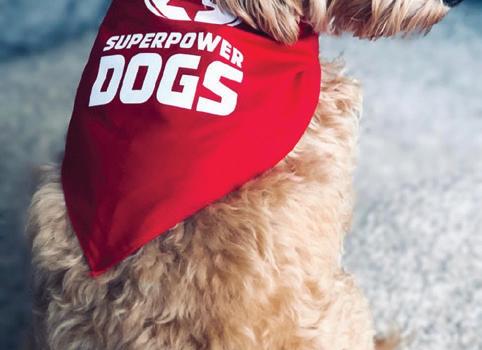

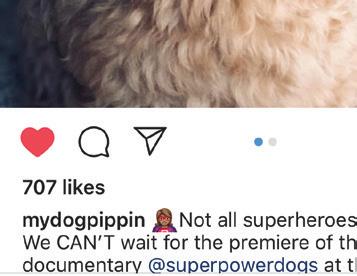

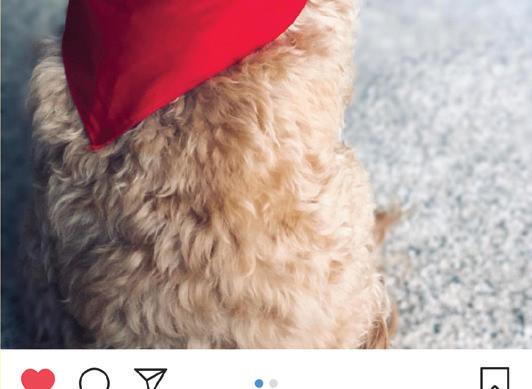
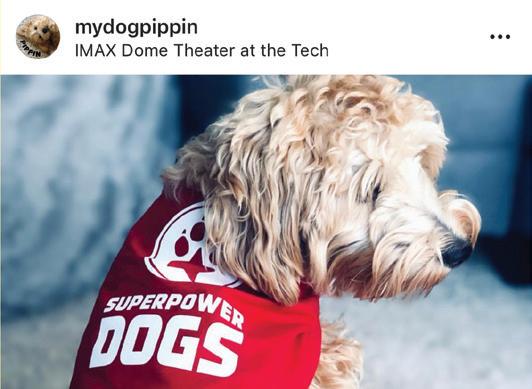
CORNER
SOCIAL
Follow us! @TheTechInteractive @TheTechInteractive @TheTechInteractive @TheTechInteract FALL 2019 | 35
The Tech Museum of Innovation is now








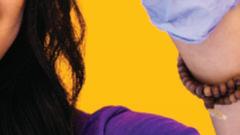























































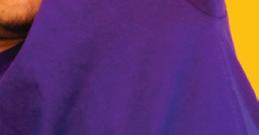












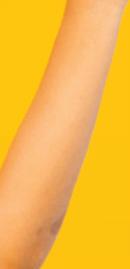



36 | MADE AT THE TECH 20 1 S. M arket St ., San J os e, CA 95 113 thet ech. or g |
























































 by Grace Talice Lee
by Grace Talice Lee







































































































































































































































































































